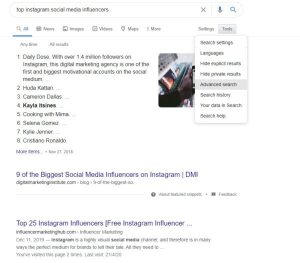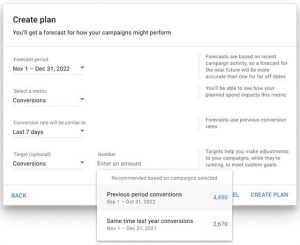
Social media has matured as a marketing channel over the years and is often paired with other channels like websites, blogs, videos, and more when trying to accomplish a specific business goal. Lost on me, until more recently, was the value of setting social media goals when it comes to designing a social media strategy.
Overview
Social media, as I often treated it, was a one-to-many information channel. I would write a new blog post and, using an auto-posting plug-in and scheduling tools like Buffer and Hootsuite, I would blast my post on Twitter, Facebook, and LinkedIn. My only strategy was based on the idea that the reader would find the headline, excerpt, and image compelling enough, on one of these social media platforms, to click on the link and discover SteveBizBlog. From the website, we hoped that the prospect would find our content interesting enough or be drawn to one of our free offers and signup for our email list. However, what I’m discovering is that it is taking more and more effort to reach fewer and fewer people using this, rather ill-conceived, strategy.
Today with so much stuff in my personal social media feeds, most of which I do not care about, I rarely, if ever, read more than a few posts before I lose interest and move on. Moreover, I don’t think I’m alone.
What I finally internalize is that with an overabundance of social media content the old ways of spray and pray are no longer working and that, for social media to remain an effective marketing tool, it needs to be more of a one-on-few channel vs a one-on-many channel. Moreover, it needs to have a more specific objective.
With the way platforms like Facebook are rewriting their algorithms to prioritize engagement. It is becoming more and more obvious that more of the same will not produce the results that I want.
Lost on me until more recently was the value of setting social media goals when it comes to designing a social media strategy. It was not until I hired a new social media manager, which led me to describe my social media strategy, that I noticed that what I had was basically no goals and no strategy.
I began to ask myself: Do I want to achieve brand awareness with lots of impressions? Do I what to create content that people are likely to share? or Do I want leads? These are just some of the questions I asked myself about my social media goals and you should too.
For example, I could create a Facebook Meme that would generate 50 likes but no click-throughs. But I could also create a blog post and post it on Facebook which could generate no likes but generates 50 click-throughs to my website. One is not better than the other as I realize that each achieves a specific goal but the real question was, what were my goals for SteveBizBlog.
After some research I now believe there are essentially six social media goals worth considering:
- Brand Awareness
- Community Engagement
- Followers
- Traffic
- Lead Generation
- Revenue
Brand Awareness Social Media Goal

Photo by Patrick Fore on Unsplash
When we talk about social medial goals for awareness we are talking about both:
Reach which is the number of unique people who see your content and
Impressions which is the total number of times your content was displayed.
To put a finer point on it, a single unique person in your reach may see your content two times. That would be a reach of one and two impressions.
When it comes to awareness, as a social media goal, let’s not forget that, as we discussed in “The Rule of Seven”, that it takes approximately seven impressions in the span of 18 months to penetrate the buyer’s consciousness. Therefore, while you want to get your content in front of more people, you have to reach a minimum number of impressions per unique visitor to reach the buyer’s consciousness. As you would expect, awareness takes time and consistency to accomplish.
Moreover, as we discussed in “Brand Marketing vs. Direct Marketing” the goal of a brand awareness campaign is only to help facilitate the sales process and not make actual sale.
Social media is not the only channel to help you create brand awareness. As we discussed in the post “Brand Awareness – free and low-cost ideas” there are many other ways to achieve this goal. However, when it comes to social media, brand awareness is generally accomplished by renting access to an already existing channel’s audience using a paid engine.
The most important thing, when it comes to renting an audience to achieve brand awareness, is proper targeting. For instance, if your retail business sells power tools that are predominantly used by male customers you may not want to target a platform like Pinterest whose audience is tipped heavily toward a female demographic.
Most platforms that rent you access to their audience offer both Pay Per Impression (PPM) and Pay Per Click (PPC). Generally, PPC is designed more for direct marketing and PPM is designed to achieve brand awareness. The fee associated with PPM is based on 1,000 impressions.
Community Engagement Social Media Goal

Image by Shari Jo from Pixabay
When we talk about social media goals for engagement we mean likes, comments, shares, or retweets. Engagement is more direct and helps achieve the second goal of Brand Marketing, making a positive association with the brand. This means that the engaged prospective client has read and demonstrates some level of support for the content through their engagement.
When it comes to the Know Like Trust continuum, as defined by John Jantsch in his book “Duct Tape Marketing”, engagement demonstrates enough trust to make the prospect do something with the content.
The first step in writing content that will drive engagement is to write content with value that people want to read, watch, or listen to.
On the flip side, you need to use your social media accounts to engage with other content developers too. Asking questions or leaving comments on their content will often drive reciprocity and start a conversation. You want to show the prospective client that there is a person behind the brand.

Memes are those interesting pictures with inspirational sayings on them. Memes are self-contained and do not require a click-thru so they are frequently liked and shared. Branding your memes with your URL will at least gives the curious prospective client a way to finding your site.
Another idea to drive engagement is to use branded hashtags where appropriate and encourage others to respond to a question or challenge.
For example, one of my branded hashtags is #ContentForEntrepreneurs. One way in which I use a branded hashtag is to create a social media post and say something like:

This tactic encourages others to write their own posts and include your branded hashtag #ContentForEntrepreneurs.
One of the best engagement techniques I saw to not only drive engagement but also help self-identify potential customers involved a contest conducted by a local HVAC company that I wrote about in “Host a Contest to Self-Identify Customers”
Still, on the topic of using hashtags to promote engagement, don’t forget to look at trending topics. For example, you might post
“Can’t get to the office because of #NorEaster2021 – Why not use the unexpected day off to develop your #sidehustle with SteveBizBlog.com”
Also, every day has a hashtag like #WednesdayWisdom or #FridayMotivation.
Finally, let us not forget to encourage more remote engagements with review sites like Yelp and Foursquare that encourage patrons to share their experience in a comment or star rating.
Followers Social Media Goal

Image by Lena Helfinger from Pixabay
When we talk about social medial goals for followers we are talking about people that make a conscious choice to receive your content in their feeds. Depending on the platform they may be called followers, fans, friends, subscribers, or connections.
Having followers means that they think enough of your brand to want to consume your content on a regular basis. Having followers means that they trust you. Most often followers are interested in what you have to say and want to be reminded each time you add more valuable content. However, this trust can easily be broken if the content you post drifts toward too much self-promotion and not enough good old-fashioned value.
We all have products or services we want to sell, however, when it comes to social media we need to provide way more valuable content than promotional content. While everyone has their own media content rules, most fall into the category that around 10% to no more than 20% of your content should be viewed as a sales pitch or you risk being unfollowed.
I feel the main reason for having followers is to have an engaged audience that really wants to hear your message. However, when someone is at the crossroads of either following you or not, many people view the number of followers you have as social proof. They assume that with more followers the content must be valuable.
We are often lazy in our decision-making processes and figure that if lots of others choose something that perhaps they have knowledge that we do not have and we choose to just follow the crowd so we don’t miss out. This gives rise to many businesses buying followers just to provide social proof.
So, if growing followers is your goal recognize that there is a distinction between quality (followers that really like your stuff) and quantity (followers just there for social proof).
Traffic Social Media Goal

Photo by WebFactory Ltd on Unsplash
When we are talking about social media goals for traffic we are generally talking about driving prospects with a link to your website.
Since our ultimate goal to get the “click-thru”, we have to present them with something of value that will help them make that first micro commitment to leave where they are and follow a path to your website. Generally, that involves some type of an offer or creating a compelling enough message that they want more.
Eye tracking research found that most people view the headline first. Therefore, the social media post’s headline is where we need to start.
I once published a book using a publisher from New Jersey. After spending many months writing the content of the book the publisher said that what he really cared about was the title and the cover. He said that a buyer will make their decision to buy your book based on the title on the spine first followed by the front and back cover of the book. That is the same with any social media post with a link. The headline is what they see first and if it does not trigger a desire to want more they move on. Therefore, your headline is the most important thing to get right if you what traffic to follow the link you provide.
Personally, I use the free headline analyzer by isitwp. I try out many different headlines to find one that produces the best score.
Next, the image after the headline needs to be catchy so as to draw attention towards the viewer. We often use an image that is not very compelling. I think there is an art to finding an image that makes you stop scanning and take notice.
There is a reason GoDaddy chose to use Danica Patrick who is an attractive race car driver as their attraction character. As a guy, it is hard not to stop scanning a page when you see a pretty woman. It’s a hardwired emotional appeal that commands our attention.
I would also argue that to create an effective click-thru tactic you might want to create mystery around your headline that compels the viewer to click thru to discover the answer.
Lead Generation Social Media Goal

Image by Tumisu from Pixabay
When we talk about social media goals for leads we are talking about capturing a prospect’s contact information. With a prospect’s contact information, we can add them to an email drip campaign to drive them through our value ladder or pass the lead across to our sales folks to make a sale or to upsell the prospective client.
Remember, as we discussed in “How to Drive Growth by Correctly Targeting Traffic” there is the traffic that we attract, the traffic we rent, and the traffic we own. Traffic that we own are our leads. In the end, we want to capture all traffic that makes it back to our site and convert them into leads that we own.
According to Mary Rose Maguire, before you implement any form of lead generation you need to spend some time thinking about what will happen when you get your prospective client to provide their contact information. She encourages her clients to create a flowchart that details the entire process and all the elements needed so the sales team can make it work. She recommends having everything in place on the back end before you receive that first opt-in from your website.
When it comes to lead generations using social media it almost always involves driving traffic to a squeeze page where the prospect is encouraged to exchange their contact information for something for free.
One of the most popular ways to get a prospect to provide you with their email is to offer them a free download. The download could be a paper, a report, an eBook, a template, or anything that the prospect sees as valuable. This is generally the first micro-commitment the customer makes with you.
If you want the prospective client’s phone number and physical address, one of the popular tactics is to use a Free Plus Shipping funnel. Here you offer a client a free paperback or something that has a high perceived value for free as long as they pay for shipping and handling charges. Of course, when they accept your offer they have to complete a form with their shipping information and phone number.
Lead generation often includes some form of Pay Per Click (PPC) ads to drive traffic to your squeeze page, so you have to target your ads well to achieve an acceptable return on investment. Additionally, you will want to be sure to test the effectiveness of your ads so that you do not incur a lot of PPC costs with a high bounce rate.
Revenue Social Media Goal

Image Credit: Pinclipart
The ultimate social media goal of every business is to create revenue and all the social media goals are in some way aligned to make that happen. So, in this context when we are talking about revenue as a social media goal, we are talking about strictly turning a prospective client into a paying customer directly without the need of further nurturing.
When it comes to understanding how social media can drive revenue directly we must make the distinction between business to consumer (B2C) and Consumer to Consumer (C2C) storefronts. B2C storefronts are automated in their ability to capture a customer’s payment information and create the order. C2C storefronts, like Facebook Marketplace, require the seller to often manually take payment from the buyer and deliver or ship the product.
A good example of a B2C storefront comes from Facebook. If you have a business Facebook account you can add a Shop Now button that will allow the business to post an item for sale and then use an eStore to sell directly from either their Facebook page or a separate e-commerce site.
Facebook is not alone; Instagram, Pinterest, and Twitter have a Shop or Buy Now button in their functionality for business accounts. Generally, you create a shoppable post that is linked directly to an on-platform or off-platform e-commerce website. Some also provide the capability to create an offer, discount or deal and create a timeframe for when it will be active.
While most B2C storefronts are designed to sell products, some platforms allow you to create an event and sell tickets as well.
Then there are hosts of C2C social media sites that allow you to sell products on their platform similar to a classified ad.
Facebook Marketplace is a good example where one consumer can sell to another consumer. However, there is nothing that prevents a small business from using a platform like Facebook Marketplace to sell their product direct to a consumer.
Additionally, there are private social networking sites like Nextdoor that allow you to interact with your neighbors. Many of these private networking sites also have a For Sale tab where you can sell directly to the consumer.
In addition to direct selling by having a social media storefront or selling directly to consumers using a peer-to-peer selling platform, another effective way to generate revenue is by using social media to engage with people in a one-on-one platform. You can respond to people directly on the platform about a problem or issue they have and direct them to a product via a URL you have that will solve their problem. For example, I might respond to a person’s inquiry on Reddit about how to do a business valuation with a comment directing them to an eBook I sell on Amazon on how to buy or sell a business that contains several formulas for doing a business valuation.
You can also deliver live or recorded demonstrations or reviews of a product you offer and include a link directly to your store where they can buy your product.
Finally, there is the matter of using social media to leverage commission sales that others make on your behalf. For example, affiliates and influences can utilize their social media channels to sell your products in exchange for a commission.
Summary

There are essentially six social media goals ever business should consider:
- Brand Awareness includes both “Reach” which is the number of unique people who see your content and “Impressions” which is the total number of times your content was displayed.
- Engagement means “likes”, “comments”, “shares”, or “retweets“. Engagement is more direct and helps achieve the second goal of Brand Marketing
- Followers are people that make a conscious choice to receive your content in their feeds.
- Traffic is about driving prospects to your website.
- Leads are about capturing a prospect’s contact information. With a prospect’s contact information, we can add them to an email drip campaign to drive them through our value ladder or pass the lead across to our sales folks to make a sale or to upsell the prospective client.
- Revenue is about turning a prospective client into a paying customer directly without the need for further nurturing.
Have you defined a strategy for each of your social media goals?
Digital & Social Articles on Business 2 Community
(91)
Report Post







